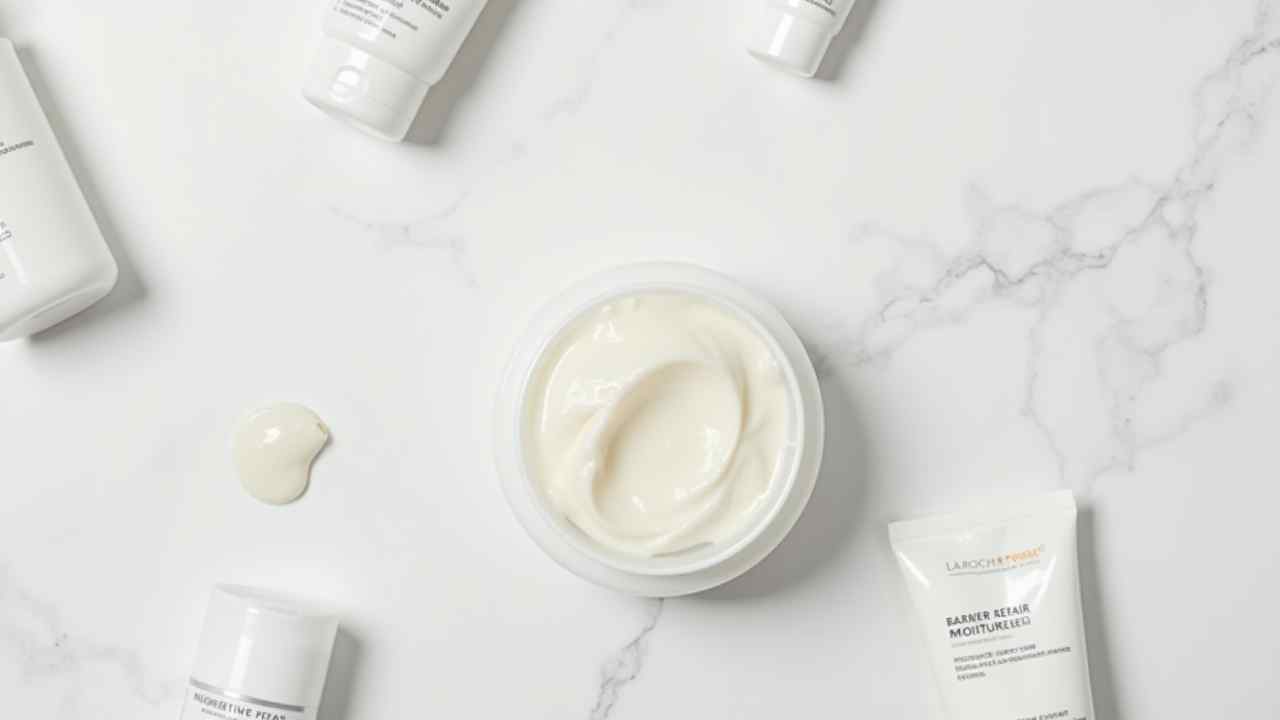
🛡️ How to Repair Your Moisture Barrier After Retinoids (A Soothing Guide)
🛡️ How to Repair Your Moisture Barrier After Retinoids (A Soothing Guide) 🛡️
You started using a new retinoid product. You were excited for smoother, clearer skin. But now, your face is red, tight, flaky, and everything stings. This is a classic sign of a damaged moisture barrier.
First, do not panic. This is a very common issue, especially when starting powerful active ingredients. Your skin's protective barrier has been compromised. The good news is that you can absolutely fix it. You just need to be very gentle.
This guide will show you exactly how to repair your moisture barrier after retinoids. We will walk you through a simple, soothing recovery routine. Let's get your skin back to a happy, healthy state. ✅
🤔 What Are the Telltale Signs of a Damaged Moisture Barrier?
Your moisture barrier is the outermost layer of your skin. Think of it as a security guard. It keeps good things (like moisture) in. It also keeps bad things (like irritants and bacteria) out. When it is damaged, your skin will let you know.
Common signs of a damaged barrier include:
- Redness and persistent inflammation.
- A tight, uncomfortable, "stripped" feeling.
- Flaking, peeling, or a rough texture.
- Products that you normally love suddenly sting or burn upon application.
If you are experiencing these symptoms, it is a clear signal. Your skin is crying out for help. It is time to start the repair process immediately.
Step 1: What is the First and Most Important Step?
This is the most critical rule. You must stop using all active ingredients. This is not negotiable. Your skin is currently injured. You need to stop applying the products that are causing the irritation.
This means you must stop using your retinoid for now. You also need to stop using any other exfoliants. This includes AHAs, BHAs, and Vitamin C serums. You should also avoid any physical scrubs or harsh cleansers.
Your skincare goal is no longer about treating acne or wrinkles. Your only goal for the next one to two weeks is healing. This is the essential first step for how to repair your moisture barrier.
Step 2: What Does a "Barrier Repair" Skincare Routine Look Like?
Your new routine should be simple, gentle, and boring. This is what your skin needs to heal. Focus on a "back to basics" approach. Your routine should only have three simple steps: cleanse, moisturize, and protect.
How should you cleanse?
Use a very gentle, creamy, and hydrating cleanser. Look for a pH-balanced formula that is fragrance-free. Do not use foaming cleansers, as they can be stripping. Wash your face with lukewarm water, never hot.
What is the most crucial product?
A barrier-repair moisturizer is your hero product. This is what will do the heavy lifting of the repair process. Look for a rich, soothing cream with specific ingredients. Ceramides are the most important ingredient to look for. They are the natural lipids that make up your skin barrier.
Other great ingredients include niacinamide, glycerin, and panthenol. Soothing ingredients like centella asiatica (cica) are also fantastic. Apply your moisturizer generously, morning and night, to damp skin. 💧
Can you use an occlusive layer at night?
Yes, this is an excellent final step for your nighttime routine. After your moisturizer, apply a thin layer of an occlusive product. This can be Vaseline, Aquaphor, or a Cica-balm. This creates a seal to prevent water loss. It protects your skin while you sleep. 🩹
⏳ How Long Does it Take to Repair the Moisture Barrier?
The time it takes to heal depends on the severity of the damage. For mild irritation, your skin might feel better in just a few days. For more significant damage, it could take two to four weeks of a consistent, gentle routine.
The key is to be patient. Do not be tempted to reintroduce your retinoid too soon. Wait until your skin feels completely back to normal. This means no more redness, stinging, or tightness. Once healed, you can slowly and carefully reintroduce your actives. Start with just once or twice a week.